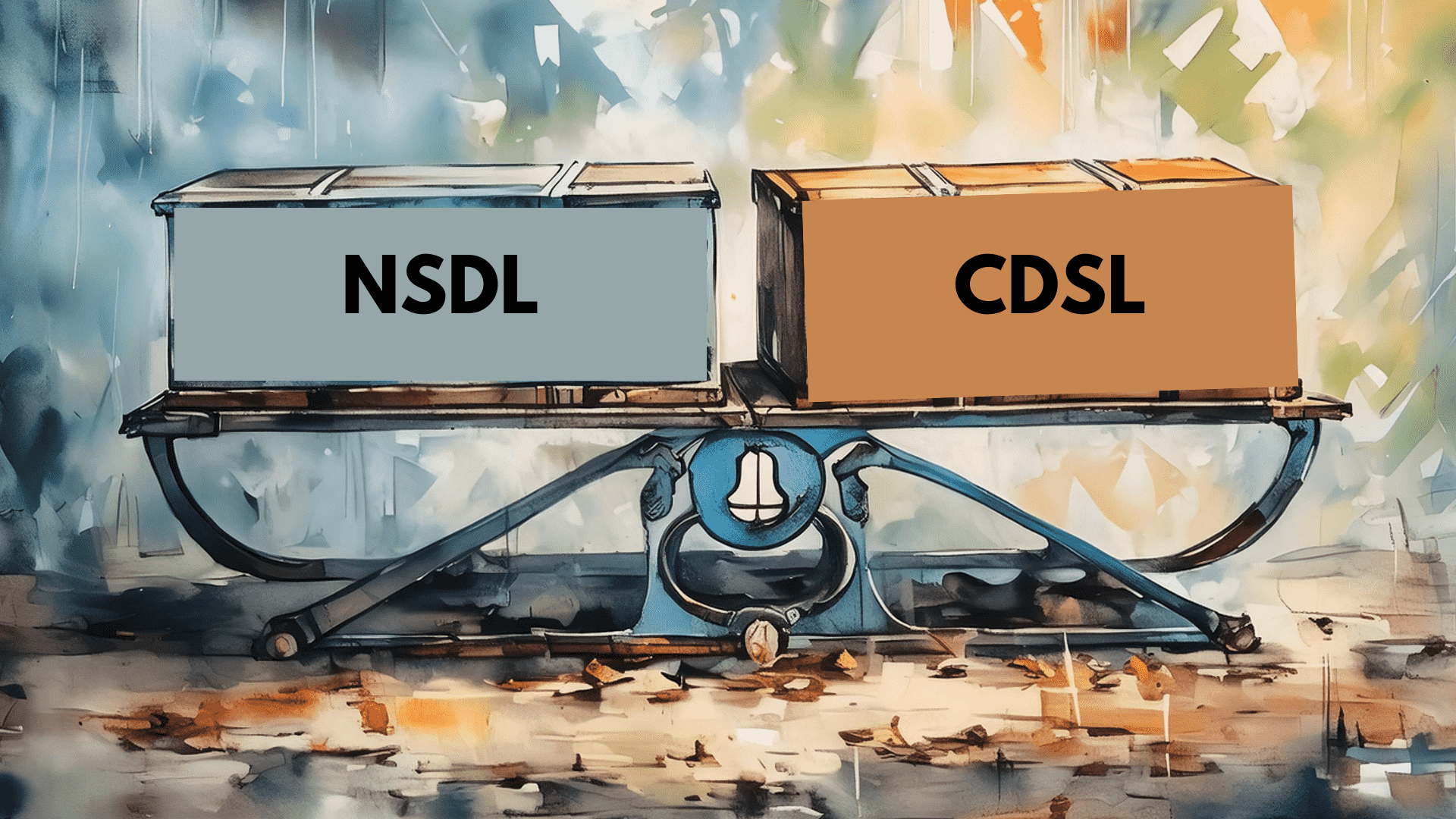When venturing into the Indian stock market, investors frequently encounter two crucial entities – the National Securities Depository Limited (NSDL) and the Central Depository Securities Limited (CDSL). While these terms often surface during the process of opening Demat accounts, the nuanced differences and specific roles of these depositories remain a blur to many. This article aims to shed light on NSDL and CDSL, explaining their operations, differences, and importance in the Indian securities market.
The Essence and Functions of NSDL and CDSL
NSDL and CDSL are registered depositories in India, primarily tasked with holding various forms of securities like stocks, bonds, ETFs, and more, in an electronic or dematerialized format. This system of electronic holding has revolutionized the way securities are managed, traded, and transacted in India, offering a seamless and secure process for investors. The NSDL, established in 1996, is linked with the National Stock Exchange (NSE) and stands as the first and largest electronic depository in India. Its inception marked the beginning of a new era in securities handling, transitioning from physical certificates to a more efficient electronic form. Based in Mumbai, NSDL’s creation was driven by the collaboration of some of India’s leading financial institutions, including the NSE, UTI, and IDBI Bank. This pioneering entity swiftly expanded its reach, boasting over 26,000 service centers and managing more than 1.5 crore active investor accounts across the nation.
Conversely, the CDSL, established in 1999 and also based in Mumbai, serves a similar purpose but is primarily associated with the Bombay Stock Exchange (BSE). CDSL was brought into existence by the collaborative efforts of the BSE along with other major banks and financial institutions like the State Bank of India, HDFC Bank, and Standard Chartered Bank. Today, CDSL has a widespread presence with over 161 branches across India, catering to over 1.1 crore active client accounts. Both NSDL and CDSL function as depositories, offering a myriad of services beyond mere safekeeping of securities. They handle the account maintenance, trade settlements, and dematerialization of securities, streamlining the investment process for millions. Additionally, these depositories facilitate various other transactions, including off-market and inter-depository transfers, security lending, and more, contributing significantly to the efficiency and stability of India’s stock markets.
Investor’s Dilemma: Choosing Between NSDL and CDSL
A common question that arises among investors is whether they have a say in choosing between NSDL and CDSL when opening a Demat account. Interestingly, this choice is typically made by their brokers or depository participants, based on factors like operational efficiency and cost-effectiveness. An investor’s individual preference does not usually play a role in this decision. However, this should not be a matter of concern for investors, as both NSDL and CDSL are governed and regulated by the Securities and Exchange Board of India (SEBI), ensuring adherence to high standards of service and security.
NSDL vs. CDSL: A Comparative Snapshot
When juxtaposing NSDL and CDSL, several key differences emerge. NSDL, the forerunner in the electronic depository space in India, was established three years prior to CDSL. Its promoters include stalwarts of the Indian financial sector, aligning closely with the operations of the NSE. In contrast, CDSL, though a later entrant, has made significant strides in the depository domain, backed by the BSE and a consortium of major banks. In terms of operational reach and client base, NSDL has a slight edge over CDSL, with a broader network of service centers and a larger active account base as of March 2018.
Final Verdict: NSDL or CDSL?
In the grand scheme of things, the choice between NSDL and CDSL bears little significance for the average investor. Both depositories perform the critical function of securely storing investors’ securities in electronic format, much like how banks handle monetary assets. Their presence and operations have been instrumental in mitigating the risks and inconveniences associated with physical share certificates, significantly reducing transaction costs and processing times. For investors, the assurance lies in the knowledge that whether their securities are held with NSDL or CDSL, they are managed with utmost security and efficiency, under the stringent regulations of SEBI.
In conclusion, NSDL and CDSL are the twin pillars supporting the robust structure of India’s Demat system, each playing a vital role in enhancing and safeguarding the interests of millions of investors. As we navigate through the complexities of the stock market, understanding the roles and functions of these depositories is crucial, providing a clearer picture of the intricate tapestry of securities trading in India.
